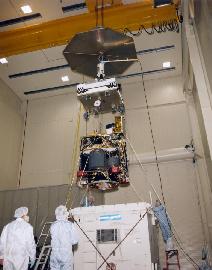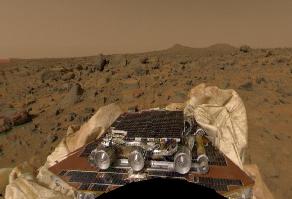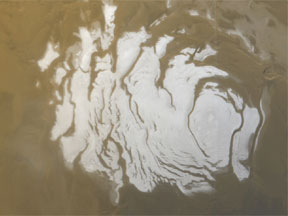Click on image for full size
NASA
Related links:
An Overview of the Mars '98 mission
The Mars '98 mission was supposed to study the climate, weather, and surface at the Martian south pole. Mars '98 was to build upon the discoveries of the Mars Pathfinder and Mars Global Surveyor missions by digging into the Martian surface in search of water.The south pole of Mars is an important region because of the unusual types of land there, including icy ground and giant sand dunes. The region is possibly important to the overall weather and climate of Mars.
Mars '98 consisted of two spacecraft. The first one was a lander called the Martian Polar Lander. This one should have landed on the surface of Mars and dug into the soil with a robot arm. The second one would have remained in orbit around Mars. This one was called the Martian Climate Orbiter.
Unfortunately, both spacecraft were lost during the mission. A math error caused the orbiter to burn up in Mars' atmosphere. Contact with the lander was lost on December 3, 1999. The spacecraft has not been heard from again and no reason for the loss of signal is known.










